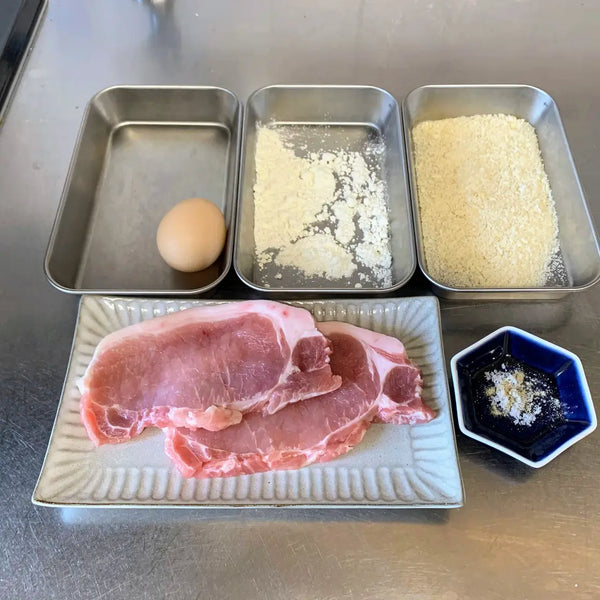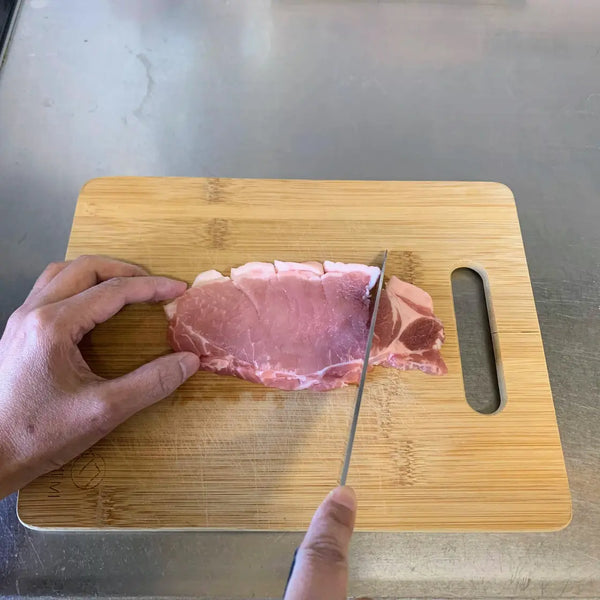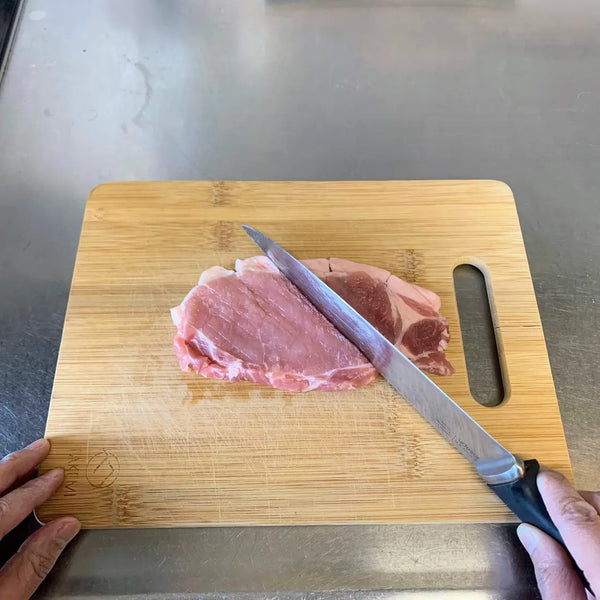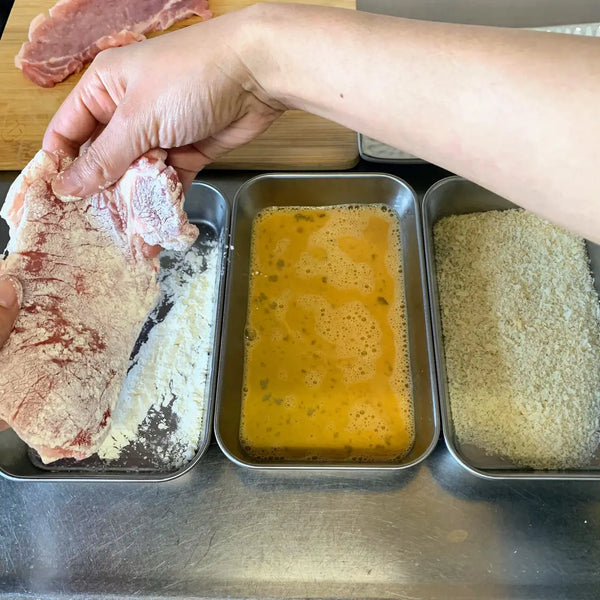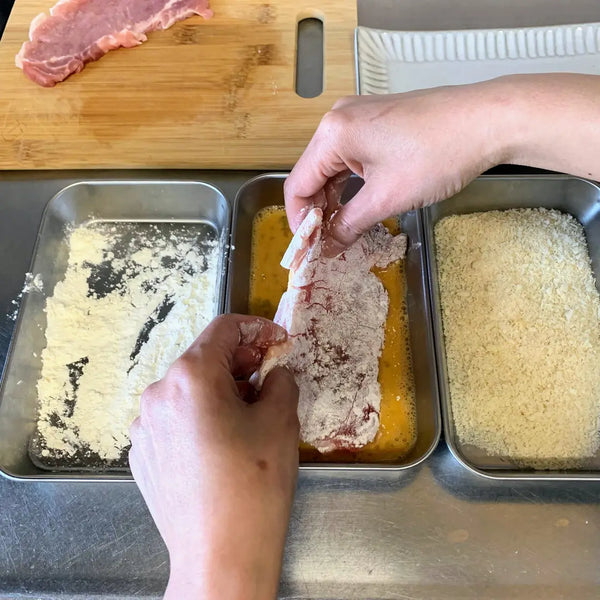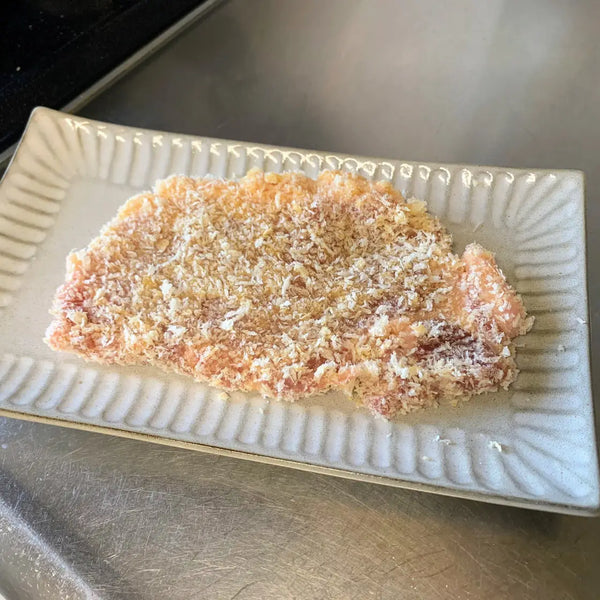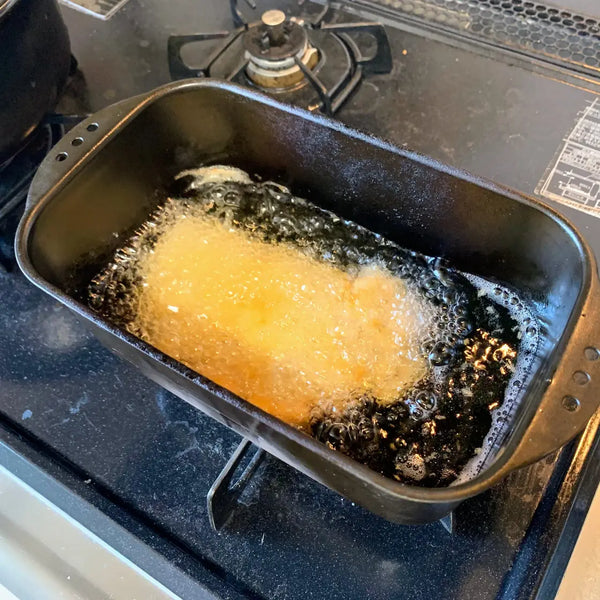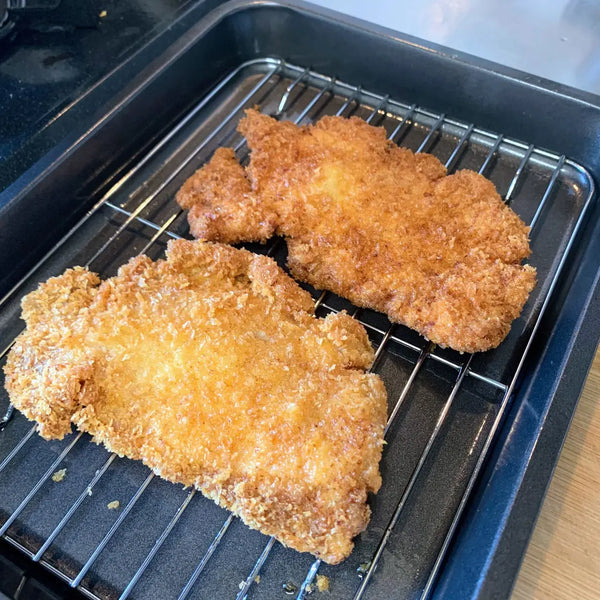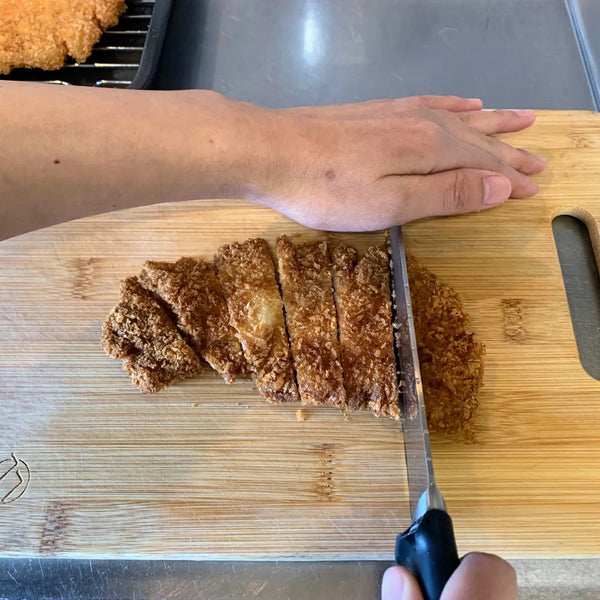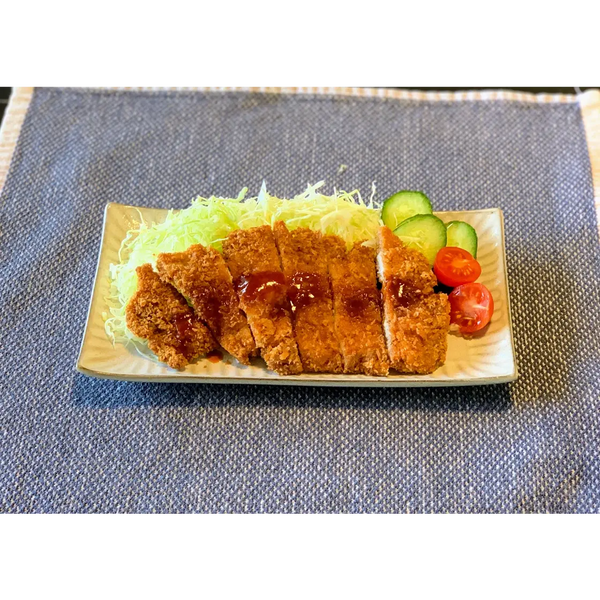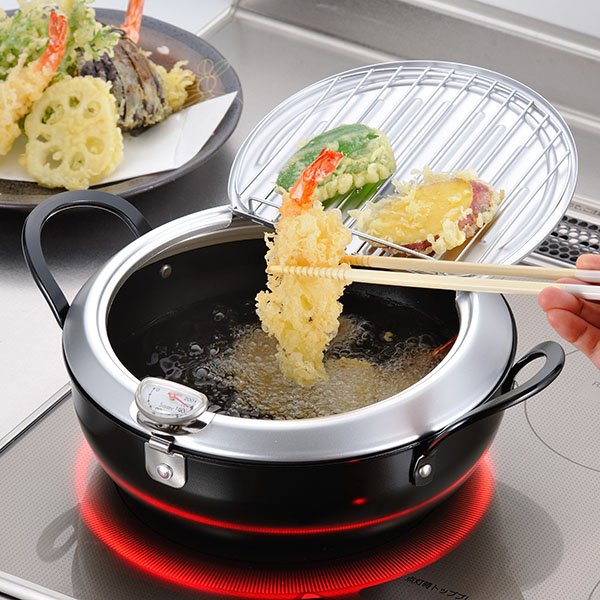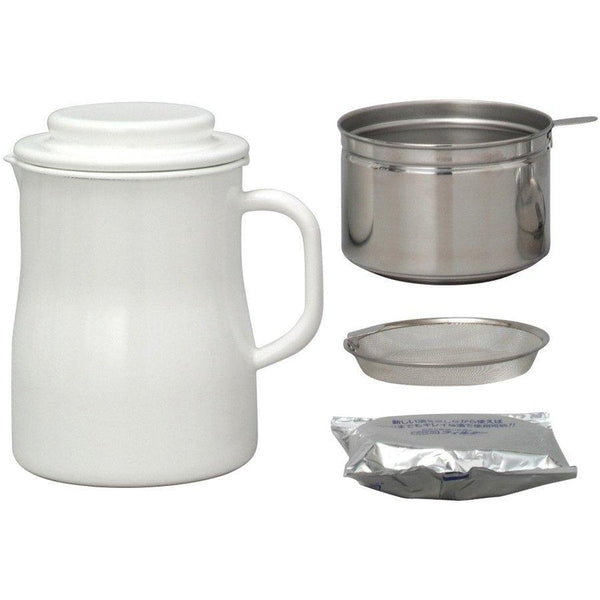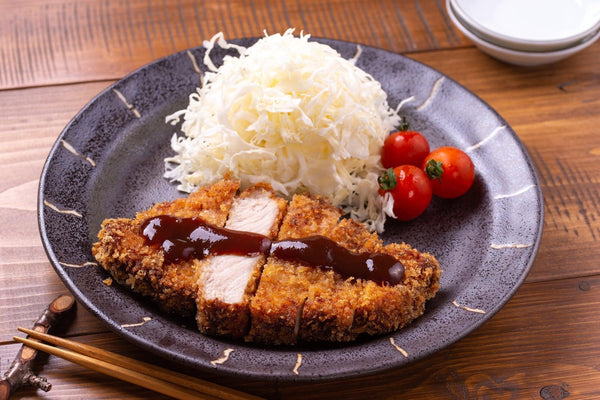
Tonkatsu is a Japanese home-style dish made of thick pieces of pork loin or fillet, coated in egg and flour, and wrapped in panko bread crumbs. It is then deep-fried and finished by being topped with tonkatsu sauce and served with vegetables such as shredded cabbage or tomatoes. Tonkatsu is often accompanied by miso soup and white rice.
The roots of Tonkatsu come from the Western-style "cutlet" dish that was popularized in Japan during the Meiji period (1868-1912). Originally, beef was used to make the cutlet, but later on, pork became popular among the Japanese as it is cheaper than beef.
Today, tonkatsu consistently ranks high in Japanese home cooking, as everyone loves its crispy texture and savory flavor. As fried food can be challenging to prepare at home, many Japanese families eagerly anticipate the opportunity to enjoy Tonkatsu for dinner.
'Katsu' also has a double meaning in Japanese. 'Katsu' in tonkatsu is pronounced the same as 'katsu = victory' in Japanese, so tonkatsu is eaten as a good luck charm when there is an important exam or game, with the hope of winning.
Outside of the home, you can find tonkatsu at Japanese restaurants and in the prepared food section of supermarkets across the country.
Tonkatsu is also served in various styles and arrangements across Japan. For example, there is 'katsu curry', which is curry served with a piece of tonkatsu on top. There is also 'katsu sando', which is a sandwich consisting of shokupan, a thick piece of tonkatsu, tonkatsu sauce, and shredded cabbage.
In this recipe, we’re going to show you how you can easily make Japanese tonkatsu at home with only a few ingredients. Instructions will follow, and we hope you'll enjoy making tonkatsu for your family and friends!
